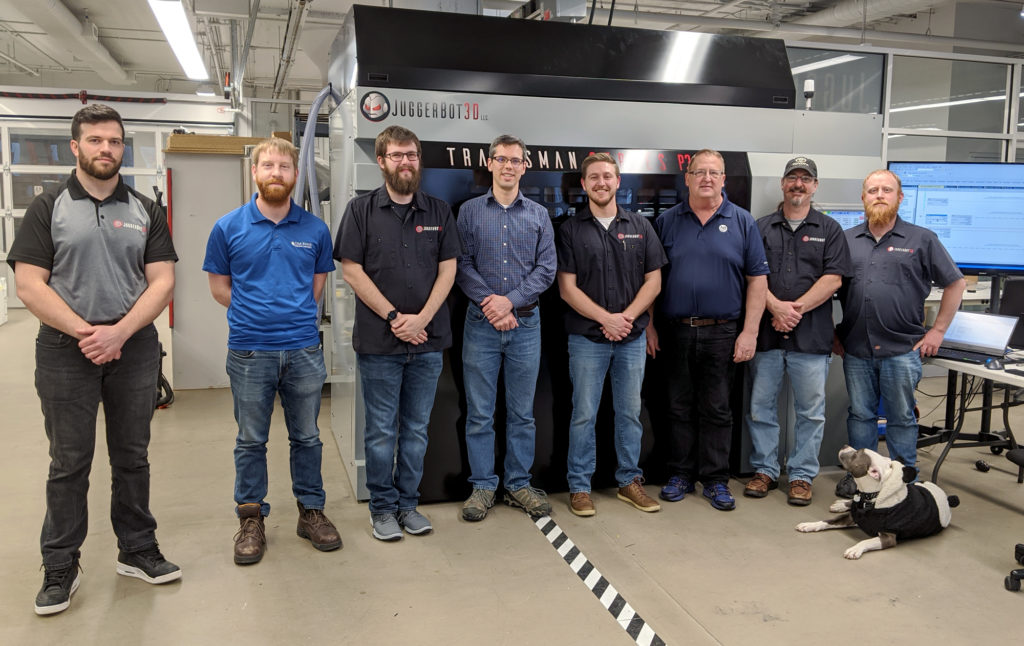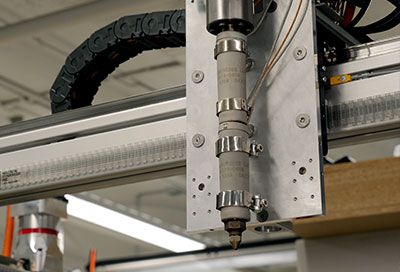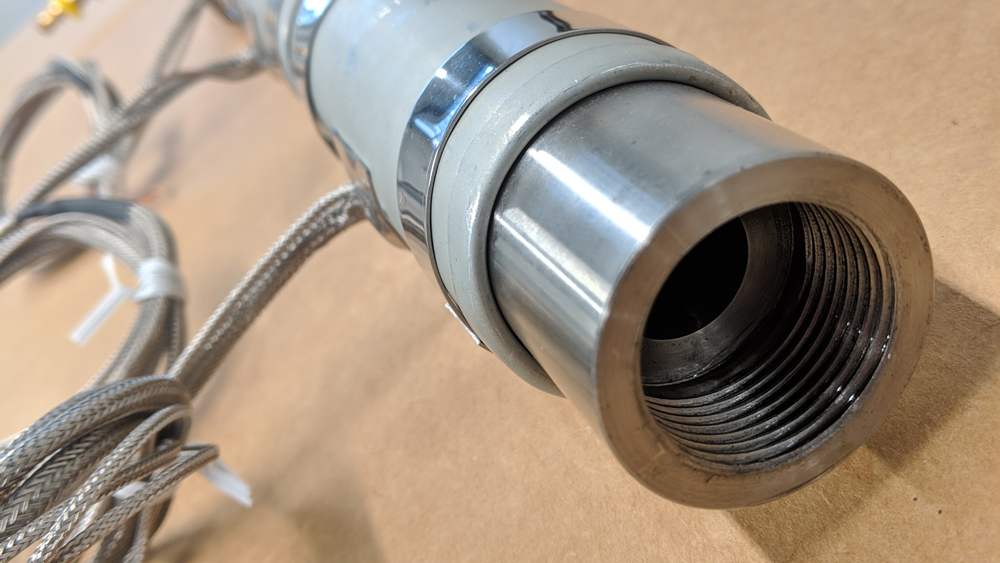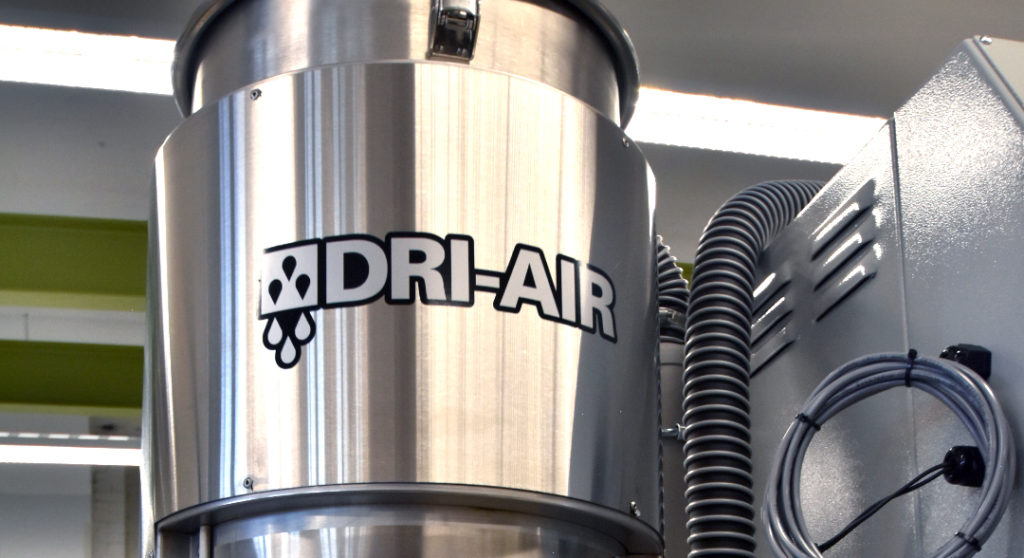JuggerBot 3D is a scarcely known 3D printing company that makes industrial FDM systems in the 3D printing hotbed of Youngstown, Ohio. Several industry insiders tipped me off about JuggerBot and their capabilities, so I spoke to JuggerBot 3D’s Dan Fernback & Zac Di Vencenzo about their company and their printers.
Three very disparate machines are made by JuggerBot 3D: the large medium-format F3-32 printer, the Tradesman pellet printer and the F1-11 high-temperature printer. JuggerBot 3D’s Tradesmen series relies on pellet extrusion, which means that you they print with polymer pellets or granules rather than filament, the traditional feedstock that is also more expensive per kilo. It is difficult to make a pellet extrusion printer that actually works well and the team has certainly done that.
The team’s other printer line, the F1-11, is filament based, comes with a filament drying unit, can print high-temperature materials and has a maximum chamber temperature of 500°C. It features an interdependent drive system, which helps reduce tension on the filament, especially important for large parts. More control also means less slippage and other factors that hinder reliability. The printer is direct drive and weighs 136 kilos. This is svelte compared to the Tradesman, which clocks in at 1,700 kilos, about the same as a Toyota Camry or a Volkswagen Passat.

The team founded JuggerBot 3D when studying at Youngstown University. They wanted a “powerful tool that was a professional-grade printer and could deliver on material requirements that didn’t exist using pellet extrusion.” The Tradesman name is a nod to the pairs’ blue-collar roots.
Capable of printing nine kilos of part per hour and with a traveling speed of one meter per second, this is a machine built for big parts. It also has a maximum chamber temperature of 100°C, a bed temperature of 120°C, and an extruder temperature of 500°C.
The Tradesman works with glass fiber and carbon fiber materials, which makes it very interesting for large molding or thermoforming parts or large industrial parts. Materials such as nylon and ASA can also be printed in its cavernous 915 mm x 1,220 mm x 1,220 mm build volume. The company has two pellet extrusion nozzles that can be hot swapped, one is built for speed and the other detail.

The Tradesman’s PosiMelt Extruder
Fernback says that the company was “mostly bootstrapped through friends and family,” and they now have 11 employees. Since 2018, they’ve been working with DSM and others on process control. This time spent under the hood was to optimize part properties and reliability, as well.
They’re proud that they use Rockwell automation controllers and PLC. Fernback also touts their cooperation with Oak Ridge National Laboratory (ORNL) on their nozzles and their use of high-quality materials throughout their printer. They also tout industrial motors.
Fernback says that, “pellet extrusion can be much much faster and pellets are readily available for many different thermoplastics.” Especially for markets such as oil and gas, the many materials needed exist in pellet form already. Di Vencenzo says that “there are maybe 300-400 filament materials, but thousands in pellets.” For their customers, pellets are not only outright cheaper but they then have “move of a leveraged buy for more pellets.”

Close up of the extruder
Di Vencenzo states that, “drying is just as important as printing itself. Any amount of effort to improve the quality of drying the plastic is valuable.” One additional step they do is to make sure that all materials are brought up to ambient temperature before a print so there is no variance at the beginning of the fabrication process. Especially with long prints, materials can take on moisture during the printing itself.
So, pre-drying is not enough in medium-format machines. The heat and moisture in the chamber should be controlled, as well. They have “industrial fans and heater systems that, in a short amount of time, suck warm air into the chamber.” The chamber itself is “fully insulated…to reduce heat bleed.”

A drying unit.
The team has worked hard to reduce the variables in 3D printing. “The process is very dynamic, whereas injection molding is static, with set temperatures and RPM.” With 3D printing, “curves, angles, print speed, mean materials react differently at different points…and we see significantly different behaviors.” This is one reason why the team advocates near net shape for large parts. For some applications, parts are printed and machined down to get the right shape and surfaces. By “machining it all the way, you can control it all the way.”

Their systems are “workstations where all of the software and hardware is integrated.” They’ve found customers in Tier One automotive, aerospace, food processing and industry. Generally, they’re used for molding parts, tooling and low-volume manufacturing.
JuggerBot 3D is an interesting proposition. Smaller than the Big Area Additive Manufacturing systems from Cincinnati Incorporated, but larger and faster than other medium-format players they would seem to have found a sweet spot for large parts that have to be delivered inexpensively at volume and speed. If they can build out, this niche the firm can be a real challenger to established players.
Subscribe to Our Email Newsletter
Stay up-to-date on all the latest news from the 3D printing industry and receive information and offers from third party vendors.
You May Also Like
3D Printing Unpeeled: New Arkema Material for HP, Saddle and Macro MEMS
A new Arkema material for MJF is said to reduce costs per part by up to 25% and have an 85% reusability ratio. HP 3D HR PA 12 S has been...
3D Printing News Briefs, January 20, 2024: FDM, LPBF, Underwater 3D Printer, Racing, & More
We’re starting off with a process certification in today’s 3D Printing News Briefs, and then moving on to research about solute trapping, laser powder bed fusion, and then moving on...
3D Printing Webinar and Event Roundup: December 3, 2023
We’ve got plenty of events and webinars coming up for you this week! Quickparts is having a Manufacturing Roadshow, America Makes is holding a Member Town Hall, Stratafest makes two...
Formnext 2023 Day Three: Slam Dunk
I’m high—high on trade show. I’ve met numerous new faces and reconnected with old friends, creating an absolutely wonderful atmosphere. The excitement is palpable over several emerging developments. The high...































